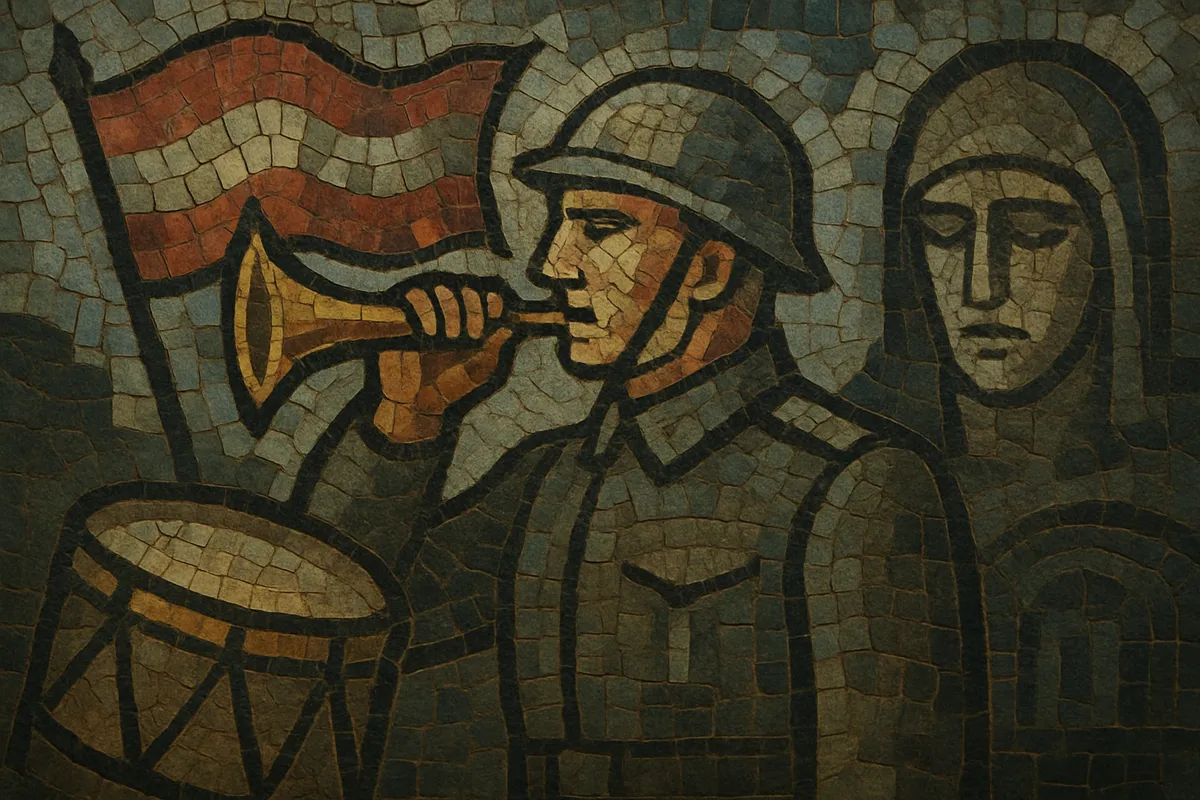Martial industrial is a post-industrial style that fuses the aesthetics and percussion of military and parade music with the textures of industrial, dark ambient, and neoclassical dark wave. It is characterized by bombastic snare rolls, timpani and drumline patterns, fanfare-like brass or string stabs, and sample-based collages drawn from archival speeches, radio broadcasts, and wartime soundscapes.
The genre often emphasizes processional rhythms in 2/4 or 4/4, deliberately repetitive arrangements, and a cinematic, historical atmosphere. Harmonic content tends to be minor-key and modal, favoring sombre chorales, orchestral pads, and choral samples. While the sound can be imposing and epic, many works also explore reflective or elegiac moods tied to memory, ruins, and the passage of time.
Proto-martial sensibilities appeared in European post-industrial circles in the late 1980s, where artists experimented with parade rhythms, archival speech, and orchestral sampling. By the 1990s, Austrian and broader Central European projects crystallized these ideas into a recognizably martial industrial sound: processional snare patterns, timpani, and brass/strings layered with industrial noise and dark ambient backdrops. Independent labels across Austria, Germany, France, and Scandinavia helped define its aesthetics and distribution.
Through the late 1990s and 2000s, hallmark releases codified the genre’s sonic grammar: militaristic percussion, neoclassical harmonies, and sample-based historical montage. Visual presentation often drew on uniforms, insignia, and archival photography to evoke themes of memory, conflict, and the weight of history. Many artists framed their work as critical or documentary, using sonic collage to reflect on the twentieth century’s upheavals.
Martial industrial intertwined with neofolk, dark ambient, and death/industrial scenes, sharing members, labels, and festivals. Scandinavian, German, French, and Eastern European artists broadened the palette—some favoring heavily orchestrated, anthem-like pieces; others emphasizing minimalist drum corps and foggy ambience. In the 2010s onward, the sound persisted in niche catalogues and digital reissues, influencing select dungeon synth and neoclassical dark wave artists who adopted martial rhythmic tropes and cinematic historicism.
Although always underground, martial industrial remains a recognizable branch of post-industrial music. Its enduring legacy lies in its distinctive blend of parade percussion, orchestral sampling, and archival sound design, and in its continued dialogue with neofolk, dark ambient, and neoclassical dark wave.


